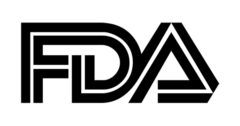
EduQuest, a global team of FDA compliance experts, answers industry’s pressing questions. In this round, Janis Olson, Vice President of Regulatory and Quality Services, provides insight into the capture of specific information and data during inspection.
Question: At my company, incoming inspection includes measuring the length of a cable used in our products. The results are recorded as pass/fail. My colleague believes the actual results (measurement) should be recorded instead. I can’t recall an actual regulation that requires this, but I suspect that it’s a better practice than recording only pass/fail. What are your thoughts?
Answer: The Quality System Regulation that covers incoming inspection — 21 CFR Part 820.80(b) for Acceptance Activities — does not directly discuss recording of the information, but it does address documenting the results of the activity.
There are also requirements under the CAPA provisions (21 CFR Part 820.110) and FDA’s Guidance for Investigating Out-of-Specification Test Results that imply you always must have the ability to conduct adequate investigations of non-conforming products and product failures.
Furthermore, under FDA’s Quality System Inspection Technique (QSIT), FDA tells its inspectors that: “The firm should routinely analyze quality data regarding product and quality problems. This analysis should include data and information from all acceptance activities, complaints, service and returned product records. Determine if the firm is capturing and analyzing data from acceptance activities relating to component, in-process and finished device testing.”
Here’s why it’s important to capture specific information: If your specification for cable length has a particular value range — say, for example, 10 cm +/- 0.1 cm — then you should record the actual results. This way, you can better investigate failures that may occur later in production or post-production.This approach also helps you to verify that the specification you originally developed is indeed appropriate and effective for your products.
If you use different suppliers, you can track which supplier is best meeting your specification. In addition, if you use different suppliers for the cables, you can track which supplier is best meeting your specification.
Consider these critical questions:
- Are the supplier’s parts at the upper range of the specification or nearer the lower limit, most of the time?
- Do you find a lot of variability?
- Is there a drift towards just barely passing the specification?
The problem with recording only pass/fail at incoming inspection should be evident: such a notation becomes meaningless for the times when you need more detailed information to conduct failure investigations — and also to determine the impact and risks of changing suppliers.
Ms. Olson, Vice President of Regulatory and Quality Services for EduQuest, served 22 years at FDA as an expert field investigator. She also chaired the PDA task force that developed the Auditing Resource Center and co-wrote the PDA technical report on computer system supplier auditing.
EduQuest can be reached by email.




